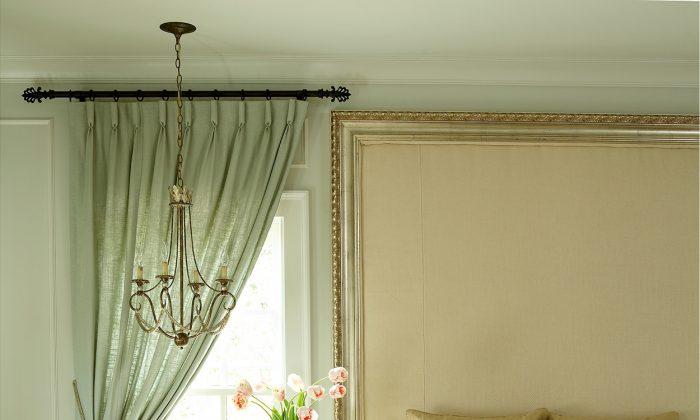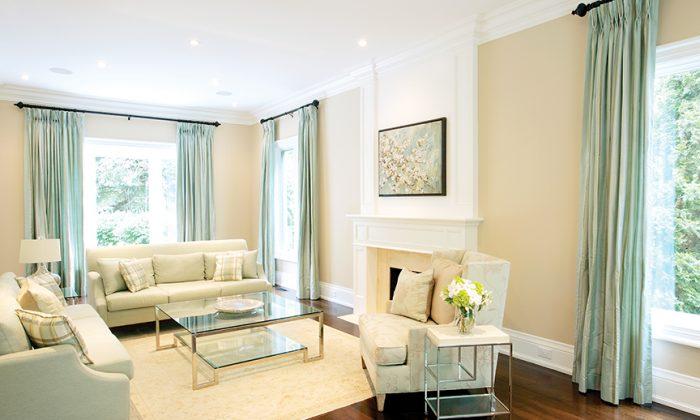It’s a fact that we sleep away one-third of our lives! With this in mind, what better way to end the day than in a cozy, comfortable bedroom? To achieve an inviting and well-decorated bedroom, be it a master, guest, teenager, or child’s room, consider the following helpful tips.
Colour
Colour is a huge influence in our lives so it is prudent to choose a colour for your bedroom that will entice sleep. Soft, light, muted, cool, and calming colours such as creams, warm whites, taupes, and beiges are known to be soothing. Blue and green hues are said to lower one’s heart rate and blood pressure, whereas lively red and orange colours evoke energy.
Colour doesn’t necessarily have to be confined to only the walls or ceiling. It can be incorporated into bed linens, wall art, area rugs, throws, and accessories. This is a great way to add splashes of colour for an extra punch, or change up your colour accents seasonally.
Fabrics
Fabrics and bed linens will add colour to a space, as well as soften the overall look. It is also a great medium in which to add texture and pattern, be it a medley of designs or, alternatively, a selection of plain and subtle hues.
Adding different materials, such as Egyptian cotton, linen, silk, cashmere, and matelassé will further enrich a bed’s appearance. Different sized cushions will plump it up and create both visual and physical comfort.
And don’t forget the headboard—a great way to incorporate fabric. Headboards come in many shapes and sizes and are a great way to draw attention to the bed itself. Think about a tufted or paneled headboard colour to coordinate with your walls and linens.
Fabricated window treatments are also a wonderful way to diminish noise and create soft lines.
Lighting
Lighting is key in any room and in particular the bedroom. The last thing one needs is harsh, overhead lighting before going to sleep, or a bright, disruptive light in the morning from an undressed window.
Consider a dimmer system for the pot lights to promote a gentle and calming effect, and use table lamps for task lighting such as reading.
Black-out lining on draperies will ensure a room is kept in complete darkness, which is known to encourage a great sleep.
Decorative finishes, such as flowers, soft fragrant candles, ornaments with a special meaning, a cluster of good books, or a grouping of personal photos are a wonderful way to create a beautiful bedroom.
Furniture scale/proportion
The bed is the most significant and often the largest furniture piece in the bedroom. It automatically takes on the focal point and dictates the style and flavour of the room (modern, romantic, traditional, cottage, country, industrial, to name a few).
As a crucial piece of furniture, the bed should be in proportion to the size of the room and the remaining pieces of furniture should be scaled to the bed.
The second most important furniture pieces in the bedroom (not including storage) are the side tables. If there is not enough space for a side table(s), consider a headboard with shelving or alternatively installing a shelf on either side or above the bed. It is always handy to have a place to put your bits and pieces: alarm clock, lamp, books, etc.
Standard bed sizes
It is worth investing in the best bed possible. Custom mattresses, like those available from Vi-Spring, can be built to suit your height, weight, and support requirements. A good quality mattress will contribute to your long-term well-being.
The five standard mattress sizes
• Twin bed – 39” (w) x 75” (l)
• Double bed – 54” (w) x 75” (l)
• Queen bed – 60” (w) x 80” (l)
• King bed – 76” (w) x 80” (l)
• California king bed – 72” (w) x 84” (l)
Designed by Janie K. Hirsch, J. Hirsch Interior Design, www.jhirschinteriors.com |
Canadian Home Trends Magazine gives you a personal tour of the most stunning homes and condos. In each issue, you are given the tools to recreate designer spaces you’ve always dreamt of having at home, in-depth renovation and design advice, and the best places to shop. To subscribe, visit www.CanadianHomeTrends.com

